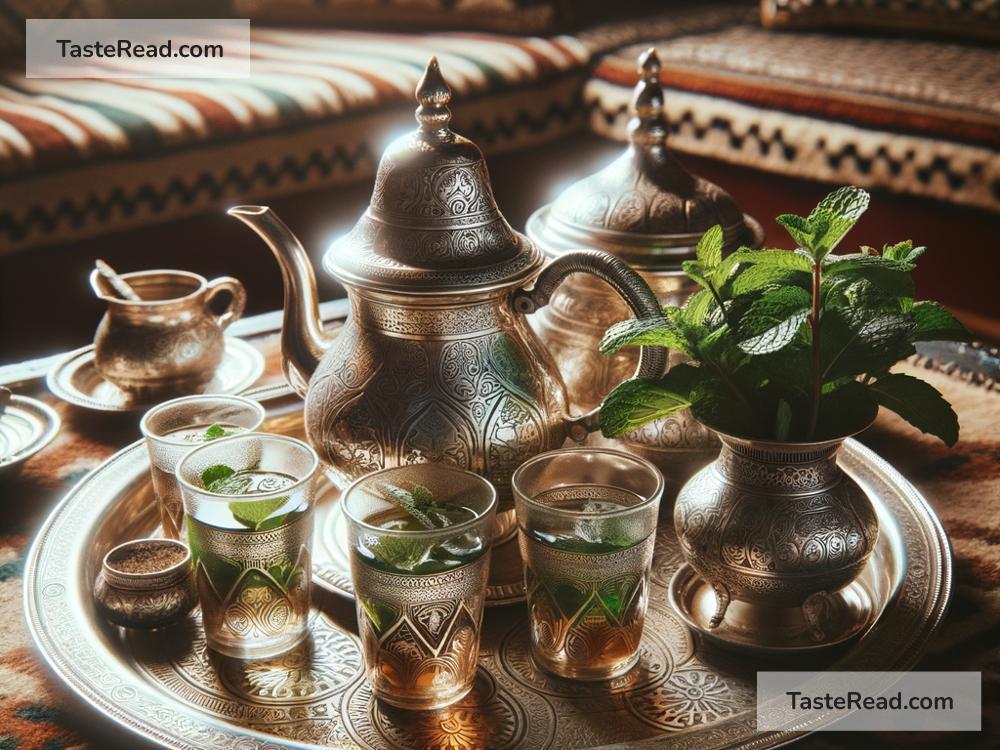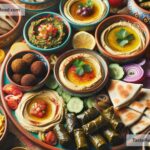Moroccan Mint Tea Rituals and Hospitality Customs
Morocco is a country known for its rich culture and warm hospitality. One of the most beautiful and cherished traditions in Moroccan life is the ritual of preparing and serving mint tea. This simple yet special drink has become a symbol of friendship, respect, and generosity. In this article, we’ll explore the importance of Moroccan mint tea and how it connects to the country’s hospitality customs.
The Heart of Moroccan Hospitality: Mint Tea
Mint tea is more than just a beverage in Morocco—it’s a way of life. Known as “atay,” this tea is made by adding green tea, fresh mint leaves, and sugar to hot water. The blend creates a refreshing, aromatic drink that is enjoyed throughout the day. Serving mint tea to guests is a key element of Moroccan hospitality, regardless of whether they visit someone’s home, a shop, or even a restaurant.
When you travel to Morocco, you’ll quickly notice that mint tea is everywhere—during family gatherings, after meals, and as part of business meetings. It represents warmth and friendliness, making people feel welcome. To refuse a cup of tea in Morocco could come across as rude, as it is closely tied to the country’s customs of kindness and respect.
How Mint Tea Is Prepared
Preparing Moroccan mint tea is not just about mixing ingredients; it is considered an art and a ritual. Traditionally, it is made using a special teapot and served in small, colorful tea glasses. The process begins with boiling water and rinsing the green tea leaves to remove bitterness. Then, the tea is brewed and fresh mint leaves are added. Sugar, often in generous amounts, sweetens the tea for a pleasant taste.
One unique aspect of the preparation is the way the tea is poured. Moroccans pour tea from a height above the glass, creating a foam or froth on top. This has two purposes: it enhances the flavor and serves as a demonstration of skill. Watching someone pour Moroccan tea is like seeing a performance—it’s done with care and pride.
The Importance of Presentation
Mint tea in Morocco is not just about the taste—it’s also about the presentation. It is often served in beautiful glasses that shimmer with colors. The teapots used for mint tea are typically ornate and made of silver. These serve as a reflection of Moroccan craftsmanship and pride in offering guests the best.
In many households, serving tea is accompanied by trays of small treats like cookies, almond pastries, or dates. These snacks make the experience even more enjoyable and show how much the host values the guest’s presence. The idea is to make visiting feel special, and tea time becomes an unhurried moment to connect and enjoy each other’s company.
The Ritual of Tea Drinking
The custom of drinking mint tea goes beyond the act of sipping—it’s a meaningful experience that often includes conversations, laughter, and warmth. It’s common for tea to be served three times during a visit. This tradition is linked to an old Moroccan saying: the first glass is as gentle as life, the second is as strong as love, and the third is as bitter as death. Each cup of tea tells a story and builds a deeper sense of connection between hosts and guests.
Tea is usually served by the male head of the household, although younger members might step in if he is not present. The act of preparing and serving tea is seen as an honor and a gesture of respect toward the guests. When drinking tea, people take their time and show appreciation for this meaningful ritual.
Hospitality in Moroccan Culture
Moroccan culture places great importance on hospitality, and mint tea is a key part of welcoming visitors. If you are invited into a Moroccan home, expect to be treated with generosity. A typical visit might start with tea and snacks, but often it leads to an even bigger feast of traditional Moroccan dishes like couscous, tagine, and bread.
The host’s goal is to make their guest feel as comfortable and appreciated as possible. No matter how modest the family might be, they will offer the best they have. This reflects Morocco’s deep-rooted belief in sharing and community. Hospitality is seen as a gift, and taking care of visitors is a source of pride.
What Visitors Can Learn
If you visit Morocco, embracing the tea ritual and hospitality customs will help you connect with the local culture. Accepting tea and engaging in conversation shows respect and gratitude for the host. Even if you don’t speak the same language, the act of sharing tea can create a sense of friendship and understanding.
When participating in these rituals, take your time and enjoy the moment. Moroccan tea is not meant to be rushed. It is slow, deliberate, and relaxing—a reflection of the country’s laid-back lifestyle and emphasis on relationships.
Conclusion
Moroccan mint tea is more than just a drink; it is a symbol of hospitality, culture, and connection. The rituals surrounding its preparation and serving tell a story of warmth and generosity. In Morocco, sharing tea is a way to strengthen bonds and create lasting memories. Whether you are visiting a home or wandering through the bustling souks, the invitation for a cup of tea is always a sign of goodwill.
So, the next time you hold a glass of Moroccan mint tea, remember that you are experiencing more than a beverage—you are being welcomed into a tradition that has been passed down through generations. Enjoy every sip, and cherish the kindness behind it.


